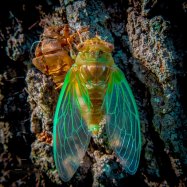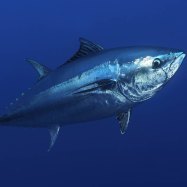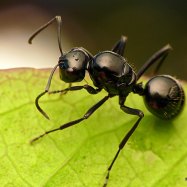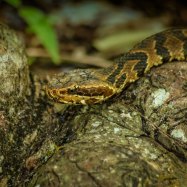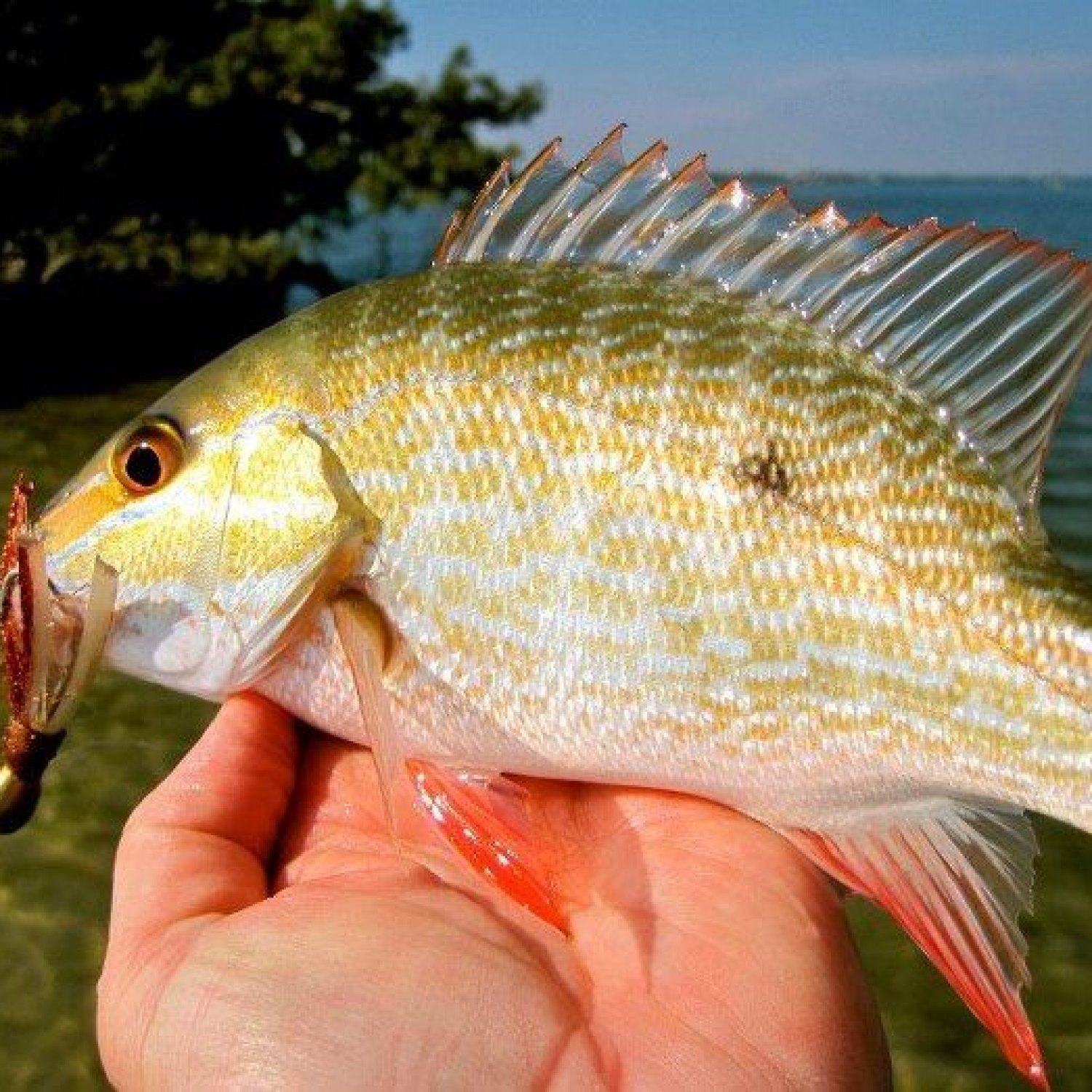
Pinfish
6-10 inches
The Pinfish, found in the Gulf of Mexico, is a popular member of the Sparidae family. These small, compressed, oval-shaped fish can range from 6-10 inches in length. With their unique coloring and feisty demeanor, it's no wonder they are a prized catch for many anglers. Keep an eye out for the Pinfish on your next fishing trip in the Gulf! #Pinfish #Gulffishing #Sparidae
Animal Details Summary:
Common Name: Pinfish
Kingdom: Animalia
Habitat: Coastal waters, estuaries, seagrass beds
Pinfish: The Small But Mighty Fish of the Gulf of Mexico
What do you get when you combine a stunning silver color, an omnivorous diet, and a compressed, oval body? The answer is the Pinfish – the small but mighty fish found in the Gulf of Mexico. With its scientific name, Lagodon rhomboides, and common name, Pinfish, this unassuming fish has captured the attention of many marine enthusiasts and scientists alike.But what exactly makes Pinfish so unique? In this article, we will dive into the world of Pinfish, exploring its physical features, behavior, and habitat, and uncovering why this fish is truly a standout in the animal kingdom.
The Taxonomy and Geographical Distribution of Pinfish
Before we dive into the details of Pinfish, let's first take a look at its taxonomy and geographical distribution Pinfish. Pinfish belongs to the Animalia kingdom, the Chordata phylum, and the Actinopterygii class. Within the Actinopterygii class, Pinfish belongs to the Perciformes order and the Sparidae family.As for its geographical distribution, Pinfish can be found in the Western Atlantic Ocean, specifically in the coastal waters of the United States and the Gulf of Mexico. They typically prefer to inhabit estuaries and seagrass beds, making them a common sight along the coastline.
The Physical Appearance of Pinfish
Now that we have covered the basics of Pinfish, let's move on to its physical appearance. The most striking feature of this fish is its silver color, which shines beautifully under the sunlight. Its scales are small and arranged in a diamond pattern, giving it a rhomboid shape and lending to its scientific name – Lagodon rhomboides.Another notable feature of Pinfish is its body shape. It is compressed and oval, with a slightly flattened head Parasaurolophus. This unique body shape allows Pinfish to glide swiftly through the water, making it a fast and agile swimmer.
Pinfish also has a unique set of fins. It has a single dorsal fin, which runs along the length of its back, and a second, smaller dorsal fin located near its tail. Additionally, it has two large pectoral fins, two pelvic fins, and an anal fin. All of these fins work together to give Pinfish excellent maneuverability and control in the water.
The Life and Behavior of Pinfish
As an omnivorous fish, the diet of Pinfish consists of both plant and animal matter. They are known to feed on seagrasses, algae, and small invertebrates such as crustaceans and mollusks. This diverse diet allows Pinfish to adapt and thrive in different environments, which is why they are found in a variety of habitats within their geographical range.Despite being small in size, Pinfish are highly social and often form large schools. These schools can consist of hundreds of fish and serve as protection against predators. Pinfish are also known to exhibit aggressive behavior towards each other, especially during the breeding season. They use their sharp teeth and dorsal spines to intimidate rivals and attract mates.
As for reproduction, Pinfish reach sexual maturity at around 1-2 years old. Female Pinfish can produce up to 100,000 eggs per spawning, which are then fertilized by the male. The eggs are small and transparent and are released near seagrasses where they can hatch and grow in a safe environment.
The Importance of Pinfish in the Ecosystem
While Pinfish may seem like just another small fish in the vast ocean, they play a crucial role in the ecosystem. Firstly, they serve as prey for larger fish such as snappers and groupers, helping to maintain balanced predator-prey relationships. Additionally, their grazing on seagrasses and algae helps to control the growth of these plants and maintain the health of seagrass beds, which are important habitats for a variety of marine organisms.Moreover, Pinfish are also used as bait in recreational and commercial fishing, making them an important resource for fishermen. However, it is essential to regulate fishing of Pinfish to ensure their population remains stable and healthy.
The Conservation Status of Pinfish
According to the International Union for Conservation of Nature (IUCN), Pinfish is currently listed as a species of Least Concern. This means that its population remains stable, and there are no significant threats to its survival.However, as with all marine species, there are several factors that could potentially affect the population of Pinfish. These include overfishing, coastal development, and pollution. It is crucial to carefully monitor and manage these threats to ensure the long-term survival of Pinfish and the entire ecosystem it inhabits.
Why You Should Care About Pinfish
You may be wondering, why should I care about Pinfish? After all, it is just one of thousands of species that inhabit the ocean. However, Pinfish is a vital part of the marine ecosystem and serves as an indicator of the health of our oceans.Furthermore, studying Pinfish can also provide valuable insights into the effects of human activities on marine life. By understanding how this species responds to changes in its environment, we can better protect and preserve not only Pinfish but the entire marine ecosystem.
In Conclusion
In conclusion, Pinfish may be small, but it is a fascinating and essential species found in the Gulf of Mexico. Its unique physical features, behavior, and ecological role make it a standout in the animal kingdom. Whether you are a marine enthusiast or a scientist, there is no denying the significance of Pinfish in our oceans.So, next time you catch a glimpse of a small, silver fish in the waters of the Gulf of Mexico, remember the incredible species it represents – the Pinfish. And let's work together to protect and preserve this tiny but mighty fish and the diverse ecosystem it inhabits.

Pinfish
Animal Details Pinfish - Scientific Name: Lagodon rhomboides
- Category: Animals P
- Scientific Name: Lagodon rhomboides
- Common Name: Pinfish
- Kingdom: Animalia
- Phylum: Chordata
- Class: Actinopterygii
- Order: Perciformes
- Family: Sparidae
- Habitat: Coastal waters, estuaries, seagrass beds
- Feeding Method: Omnivorous
- Geographical Distribution: Western Atlantic Ocean
- Country of Origin: United States
- Location: Gulf of Mexico
- Animal Coloration: Silver with vertical bars
- Body Shape: Compressed and oval
- Length: 6-10 inches
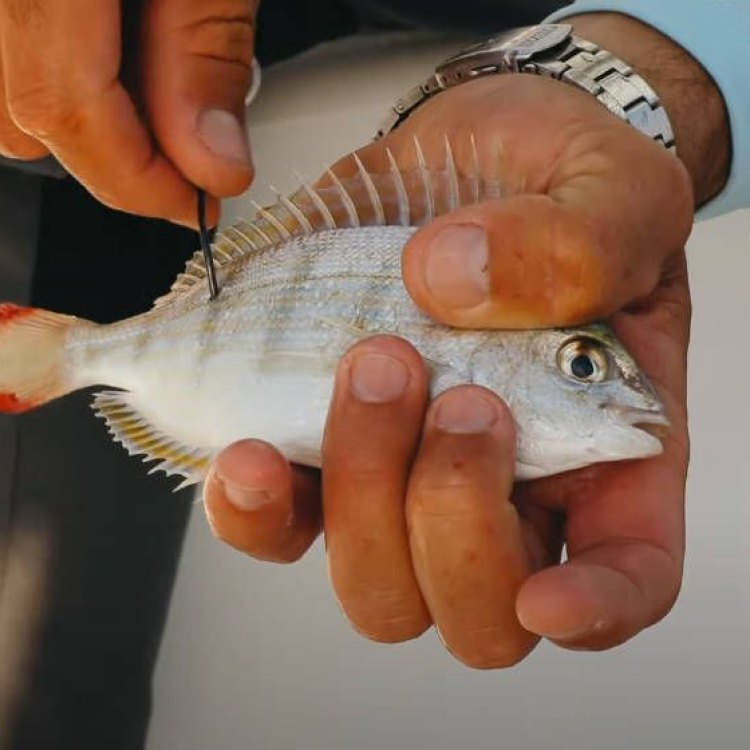
Pinfish
- Adult Size: Up to 12 inches
- Average Lifespan: 2-5 years
- Reproduction: Sexual
- Reproductive Behavior: Spawning in nearshore waters
- Sound or Call: No sound production
- Migration Pattern: No significant migrations
- Social Groups: Schools
- Behavior: Territorial and aggressive
- Threats: Habitat loss, overfishing
- Conservation Status: Not evaluated
- Impact on Ecosystem: Important prey species
- Human Use: Recreational fishing, bait
- Distinctive Features: Sharp spines on dorsal and anal fins
- Interesting Facts: Can inflate their bodies when threatened
- Predator: Larger fish, birds
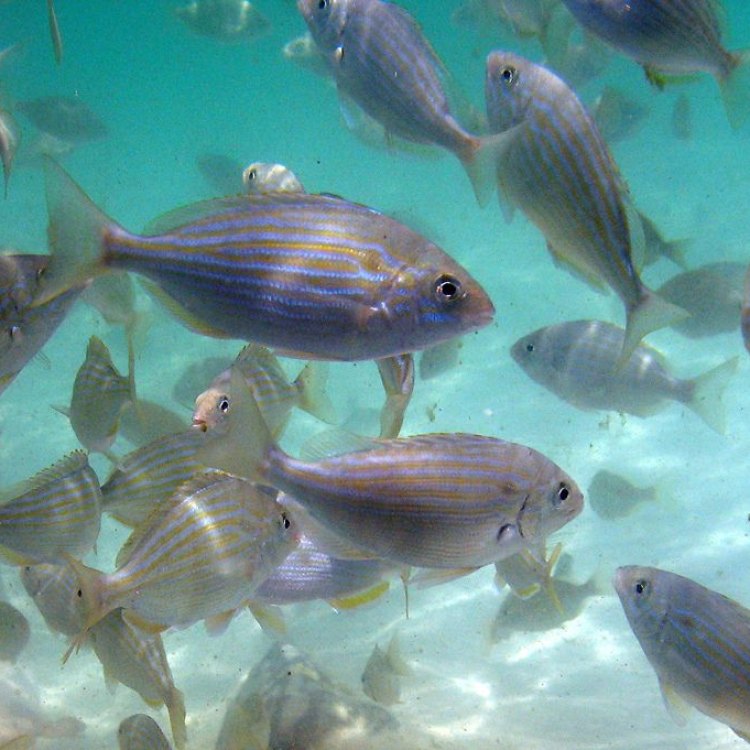
Lagodon rhomboides
The Fascinating World of Pinfish: A Small Fish with a Big Presence
In the vast and diverse world of marine life, there are many creatures that often go unnoticed or underappreciated. Their small size or lack of commercial value may cause them to be overlooked, but that doesn't diminish their importance in the complex ecosystem of the ocean. One such fish is the pinfish, a small but fascinating creature that inhabits the warm, shallow waters of the western Atlantic Ocean and the Gulf of Mexico.Pinfish, scientifically known as Lagodon rhomboides, are members of the Sparidae family, which includes other popular fish such as snapper and sea bream PeaceOfAnimals.Com. They are a relatively common species and can be found from Massachusetts to Brazil and in the Gulf of Mexico. They are also known by other names such as pin perch or sailors choice.
Adult pinfish can grow up to 12 inches in length, although the average size is closer to 6 inches. Despite their small size, they have an average lifespan of 2-5 years, which is quite long for a fish of their size. This can be attributed to their adaptability and ability to thrive in a variety of habitats.
While pinfish may not be flashy or colorful like other fish, they have their own unique characteristics that make them stand out. Let's dive deeper into the fascinating world of pinfish and discover what makes them so special.
The Birds and the Bees: Reproduction and Behavior
Pinfish reach sexual maturity at around one year of age. They have an interesting reproductive behavior, known as spawning, which takes place in nearshore waters Piranha. During the months of April to October, female pinfish release their eggs into the water and males release their sperm to fertilize them. This mass spawning creates large concentrations of eggs and sperm, increasing the chances of fertilization.Once the eggs are fertilized, they hatch within a day, and the larvae go through several stages before reaching their juvenile form. This is a critical period for their growth and survival, as many predators view them as an easy target.
Pinfish have a distinct territorial and aggressive behavior. They are often found in schools, but each fish has its own designated territory within the group. They will defend their territory from other pinfish, and even larger fish, by flaring their colorful fins and displaying their sharp spines.
While they may be aggressive towards their own kind, they are prey for larger fish such as red drum, snapper, and groupers. They are also commonly targeted by birds like ospreys and pelicans. This makes them an essential component of the food chain in the ocean, as they provide a food source for many predators.
Threats to Survival and Conservation Status
Like many other marine species, pinfish face threats to their survival due to human activities. Habitat loss, caused by coastal development and pollution, is a significant threat to their population. The destruction of their natural habitat, such as seagrass beds and mangrove forests, can have a devastating impact on their numbers.Overfishing is also a major concern for the conservation of pinfish. While they are not commercially valuable, they are often used as bait for recreational fishing. Their small size and abundant presence make them easy targets, and their large numbers can quickly dwindle if not managed carefully.
Despite these threats, the conservation status of pinfish is not currently evaluated by the International Union for Conservation of Nature (IUCN). More research and monitoring are needed to assess the potential risks to their population and take necessary conservation measures.
Small but Mighty: Pinfish's Impact on the Ecosystem
Pinfish may be small in size, but they play a critical role in the ecosystem of the western Atlantic Ocean and the Gulf of Mexico. As omnivores, they feed on a variety of small marine organisms such as crustaceans, mollusks, and algae. This helps to control the population of these organisms, preventing them from overpopulating and disrupting the balance of the ecosystem.In addition, pinfish are an important prey species for larger fish and birds. Their rapid reproduction and abundance make them a readily available food source, ensuring the survival of many other species in the ocean.
They also have an interesting adaptation that helps them to avoid predators. When threatened, pinfish can inflate their bodies by swallowing water, making them harder to swallow and less appealing to predators. This defense mechanism is similar to pufferfish and helps to protect them from being eaten.
Human Interaction: Recreational Fishing and Use as Bait
While pinfish may not have much commercial value, they are still a popular target for recreational fishing. Anglers often use them as bait for larger fish, and their abundance makes them easily accessible. However, there are regulations in place for recreational fishing of pinfish to prevent overexploitation and ensure the sustainability of their population.Pinfish are also used as bait for commercial fishing, particularly for the popular sportfish, snapper. In some areas, they are even bred in captivity for this purpose. However, the impact of this practice on their population needs to be carefully monitored to prevent any negative impacts.
The Sharp Features and Interesting Facts of Pinfish
One of the most distinctive features of pinfish is the sharp spines on their dorsal and anal fins. These spines serve as a protective measure against predators and are easily visible when the fish flares its fins.They may be small and unassuming, but pinfish have some interesting facts that make them stand out in the marine world. Besides their ability to inflate their bodies when threatened, they also lack the ability to produce any sounds or calls. This may be why they are not commonly heard of or seen in popular media.
Like many other fish, pinfish do not have eyelids, so they have to constantly swim to keep water flowing over their eyes. This also helps them to detect predators and stay alert while foraging for food.
In Conclusion
In conclusion, pinfish may be small, but they have a big presence in the oceans of the western Atlantic and Gulf of Mexico. Their adaptability, interesting behaviors, and unique features make them a fascinating species to study and observe. While they may face threats to their survival, their important role in the ecosystem cannot be disregarded.As responsible inhabitants of this planet, it is our duty to protect and conserve all species, no matter their size or value. Pinfish may not be at the top of our list, but as we learn more about them, we can appreciate their place in the complex web of life in the ocean. So, next time you come across a pinfish while fishing or snorkeling, take a moment to admire its sharp features and appreciate its vital role in the ecosystem.
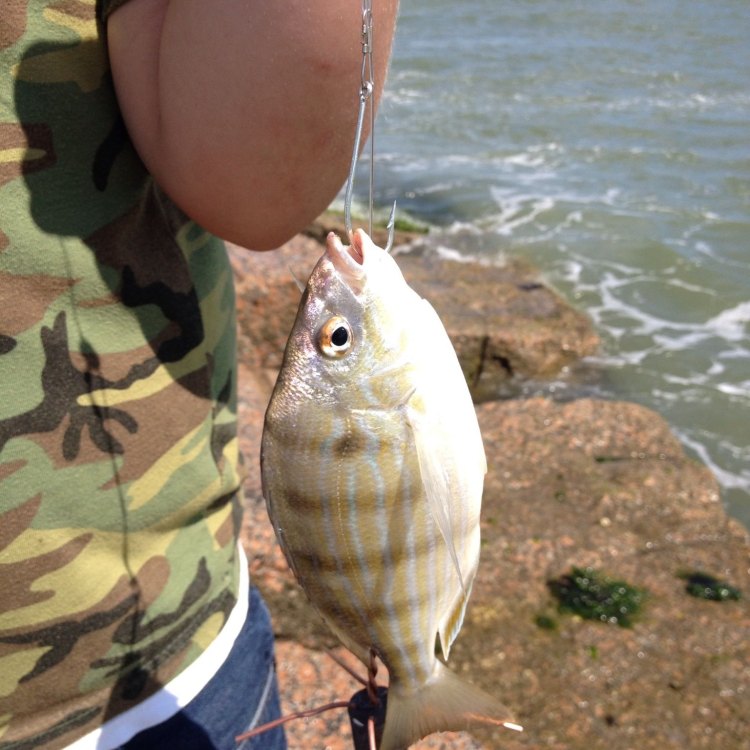
Pinfish: The Small But Mighty Fish of the Gulf of Mexico
Disclaimer: The content provided is for informational purposes only. We cannot guarantee the accuracy of the information on this page 100%. All information provided here may change without prior notice.


